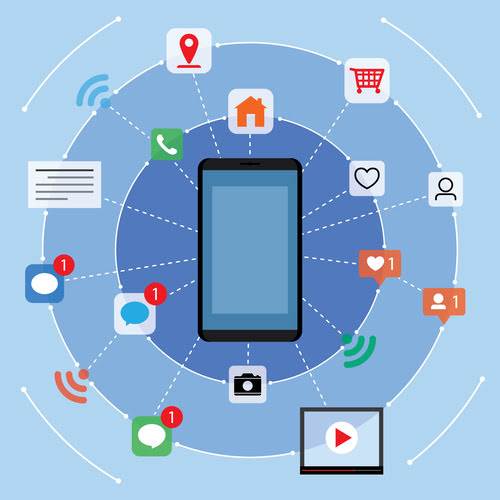The knowledge to be used to construct the cause-effect diagram comes from the people familiar with the problem and from data that has been gathered up to that point. The second key strength of this tool is that its graphic representation allows very complex situations to be presented, showing clear relationships between elements. When a problem is potentially affected by complex interactions among many causes, the cause-effect diagram provides the means of documenting and organizing them all.

Evaluation of t-wise approach for testing logical expressions in software. In IEEE International Conference on Software Testing, Verification cause-effect graph and Validation Workshops, pp. 249–256. On fault classes and error detection capability of specification-based testing.
Cause and Effect Tree Diagram Example: Lost Control of Car
ACM Transactions on Software Engineering and Methodology, 11, 58–62. On the experience of using cause-effect graphs for software specification and test generation. In Conference of the Centre for Advanced Studies on Collaborative Research , IBM Press, p. 51. An extended fault class hierarchy for specification-based testing. ACM Transactions on Software Engineering and Methodology, 14, 247–276. Applicability of modified condition/decision coverage to software testing.

Here, as well as in subsequent steps, it has proved useful to use adhesive notes to post the individual main and subsidiary causes about the main spine. Since these notes can be easily attached and moved, it will make the process more flexible and the result easier for the participants to visualize. Causes are added with lines branching off from the main backbone at an angle. Write the description of the cause at the end of the branch. These are usually one of the main categories discussed above. Details related to the cause or effect may be added as sub-categories branching off further from the main branch.
White Box Techniques
This technique aims to reduce the number of test cases but still covers all necessary test cases with maximum coverage to achieve the desired application quality. Each potential cause is traced back to find the root cause, often using the 5 Whys technique. Literature on the theory and practice of causal mapping includes a few canonical works as well as book-length interdisciplinary overviews, and guides to particular approaches. Different kinds of causal maps can be distinguished particularly by the kind of information which can be encoded by the links and nodes. One important distinction is to what extent the links are intended to encode causation or (somebody’s) belief about causation.

When diagnosing the cause of a problem, a cause-effect diagram helps to organize various theories about root causes and presents them graphically. It Increases knowledge of the process by helping everyone to learn more about the factors at work and how they relate. It Uses an orderly, easy-to-read format to diagram cause-and-effect relationships.
Potential Pitfalls and Problems in Interpretation
A tester needs to convert causes and effects into logical statements and then design https://www.globalcloudteam.com/. If function gives output according to the input so, it is considered as defect free, and if not doing so, then it is sent to the development team for the correction. The everyday work of the software development specialists coupled with specialized vocabulary usage.
- On fault classes and error detection capability of specification-based testing.
- In the glossary we gather the main specialized terms that are frequently used in the working process.
- You can probably think of other factors to add to this diagram.
- We would like to thank Dr. Nevin Guler Dincer from the Statistics Department, Faculty of Science in Mugla Sitki Kocman University, for her help in the statistical testing.
- In IEEE International Conference on Software Testing, Verification and Validation Workshops, pp. 249–256.
- If the value in the second column is incorrect then massage Y will be displayed.
We can see in the graph, C3 is connected through NOT logic with effect E3. Effect E2 – Displays Massage X – The logic for the existence of effect E2 is “NOT C1 AND NOT C2″ that means both C1 and C2 should be false. In other words, for the existence of effect E2 the character in column 1 should not be either A or B. We can see in the graph, C1 OR C2 is connected through NOT logic with effect E2. Effect E1- Update made- The logic for the existence of effect E1 is ” AND C3″.
Additional information
And second, how does that lack cause the factor being explained at the moment? As we saw in our example here, answers to those questions may help identify missing intermediate causal factor and causal relationships that are stated backward. A simple cause-effect diagram is shown in Figure 29. The phenomenon to be explained is “Lost control of car.” Some of the possible major factors contributing to that lost control are a flat tire, a slippery road, mechanical failures, and driver error. Each of these major categories of causes may, in turn, have multiple causes. A flat tire may come from a nail, a rock, glass, or a blow-out from material failure.
In such cases, the effect being explained may be so general and ill-defined that the team will have a hard time focusing and the resulting diagram may be unnecessarily large, complex, and difficult to use. A clear and precisely articulated effect will produce more relevant theories, better causal relationships, and a more effective model for the selection and testing of theories. The general “lack of training” cause on the original diagram is normally a good danger sign that the causal chain needs to be checked.
With SmartDraw, You Can Create More than 70 Types of Diagrams, Charts, and Visuals
It is known as a fishbone diagram because of its shape, similar to the side view of a fish skeleton. Sziray, J. Evaluation of boolean graphs in software testing. In IEEE International Conference on Computational Cybernetics , pp. 225–230. Cause-Effect Graph graphically shows the connection between a given outcome and all issues that manipulate the outcome. Cause Effect Graph is a black box testing technique.

If both columns contain appropriate values then update is made. If the input of column 1 is incorrect, i.e. neither A nor B, then message X will be displayed. If the input in column 2 is incorrect, i.e. input is not a digit, then message Y will be displayed. At a practical level, a cause is whatever is responsible for, or explains, an effect – a factor “whose presence makes a critical difference to the occurrence of an outcome”. Mazda Motors famously used an Ishikawa diagram in the development of the Miata sports car.
Quality Control & Quality Assurance – What Is the Difference?
Common uses of the Ishikawa diagram are product design and quality defect prevention to identify potential factors causing an overall effect. Each cause or reason for imperfection is a source of variation. Causes are usually grouped into major categories to identify and classify these sources of variation. In software testing, a cause–effect graph is a directed graph that maps a set of causes to a set of effects. The causes may be thought of as the input to the program, and the effects may be thought of as the output. Usually the graph shows the nodes representing the causes on the left side and the nodes representing the effects on the right side.